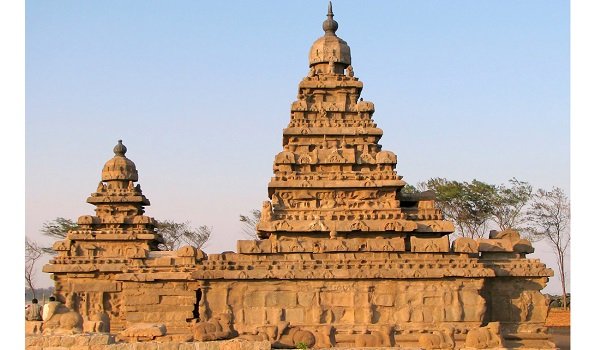The Indian temple architecture is the oldest form of architectural evidence available. In ancient India, temple architecture of very high standard was developed across all regions. The distinct architectural style of temple construction in different parts was evolved due to geographical, climatic, ethnic, racial, historical and linguistic diversities.
Based on different architectural styles, the ancient Indian temples can be broadly classified into three categories –.
- Nagara or the Northern style
- Dravida or the Southern style
- Vesara or Mixed style.
But, there are some regional styles also, particularly in Bengal, Kerala and the Himalayan areas. The temples of North and South India are distinguished on the basis of some specific features like ‘Sikhara’ and gateways. In the north Indian temples, the Sikhara is the most prominent component of the structure while the gateway is generally unassuming. The most prominent features of South Indian temples are enclosures around the temples and the Gopurams (huge multi-storey gateways). The Gopurams leads the devotees into the sacred courtyard. However, there are many common features also in the North and the South Indian temple architectural styles. These included the ground plan, positioning of stone-carved deities on the outside walls and the interior, and the range of decorative elements including the statue of animals.
Design of Hindu Temples –
The essence of a Hindu temple design is guided by the philosophy that all things are one and everything is interlinked. Based on that, there are four essential and significant principles that are also aims of human life according to Indian philosophy. Those principles are the quests for Artha (wealth and prosperity); Kama (worldly pleasure); Dharma (moral life, duty and virtues); and Moksha (self-knowledge and realisation).
The mathematically structured spaces and layout, intricate artworks, decorated and carved pillars and statues of Hindu temples illustrate and revere such philosophies. A hollow space without any embellishments situated at the centre of the temple, usually below the deity, but may also be at the side or above the deity symbolises the complex concept of Kal Purusha. This is also a manifestation of the Universal principle, Consciousness, the cosmic man or self without any form, however, omnipresent and associates all things. The Indian temple architecture suggests contemplations, encouragement and further purification of mind and prompts the process of self-realisation among the devotees; however, the practice part is left to the convention of individual devotees.
Temple Site –
According to ancient Sanskrit texts, the most suitable site for a Hindu temple is at close proximity to water bodies and gardens where flowers blossom, chirping of birds and sounds of ducks and swans can be heard and animals can rest without any fear. Such places exhibiting peace and tranquillity are recommended by the ancient Sanskrit texts for building Hindu temples with the belief that Gods reside at such places.
